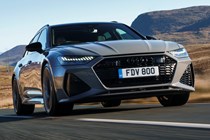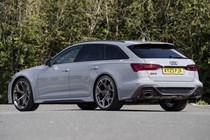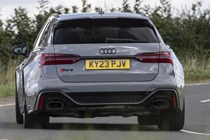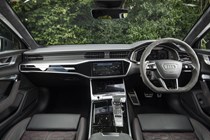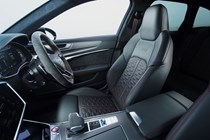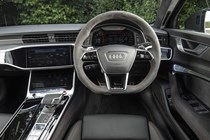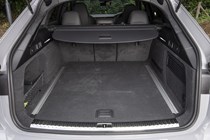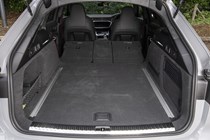Audi A6 RS6 Avant engines, drive and performance
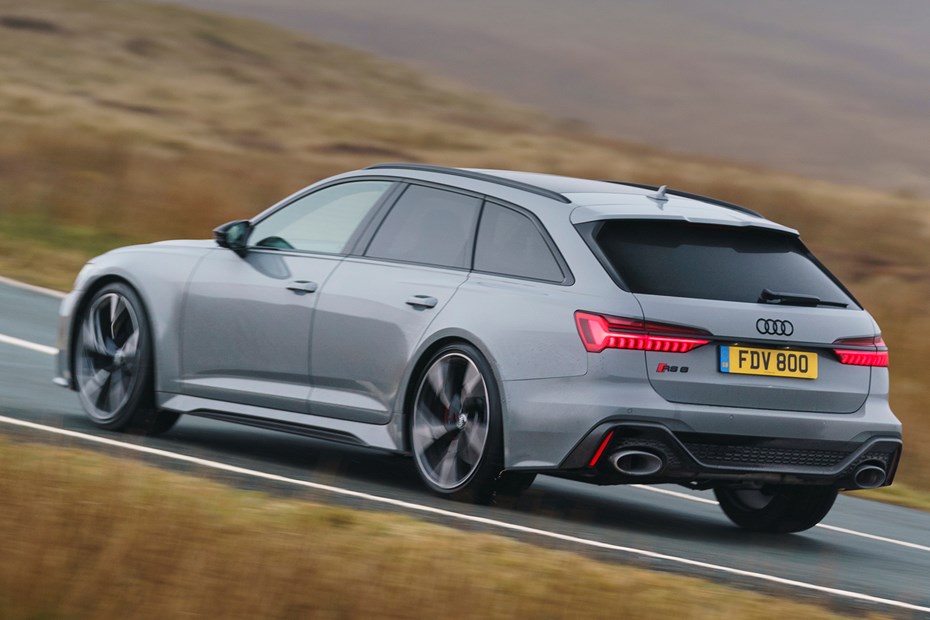
- Headline figures: 630hp and 850Nm
- Hugely impressive acceleration
- Surprisingly docile when needed, though
Petrol engine
Numerically, the Audi RS6 Avant is hugely impressive. Performance models – now the only versions available to buy in the UK – have a boost in power compared to the standard model and as a result pump out a massive 630hp and 850Nm of torque.
That’s a truly neck-straining amount of shove, and means the RS6 will hit 62mph from rest in just 3.4 seconds. Top speed is an electronically limited 174mph – pay to have this removed and 200mph is in sight.
And, when so many manufacturers are turning to plug-in hybrid technology, it’s nice to see that Audi’s sticking with a tried-and-tested recipe that gives all its performance, all the time.
For this model Audi’s even removed some sound deadening from the firewall so that V8, which was slightly muted before, sounds rather more sonorous. It’s not a brutal, race-track bred roar like you get in an AMG car, but rather a bassy and fullsome bellow that sounds purposeful enough without absolutely dominating the driving experience. Revved out to the relatively low redline it takes on a bit more of a howl but there’s so much power low down you don’t have to stretch it unless you want to.
The RS6 couldn’t escape at least a small bit of electrification, in the form of a 48v mild hybrid system that we’ve detailed more fully in the running costs section. This allows energy to be recuperated under braking to be deployed in the form of coasting along engine-free at times of low-load, plus there’s cylinder-on-demand, which shuts half the block down when it’s not needed.
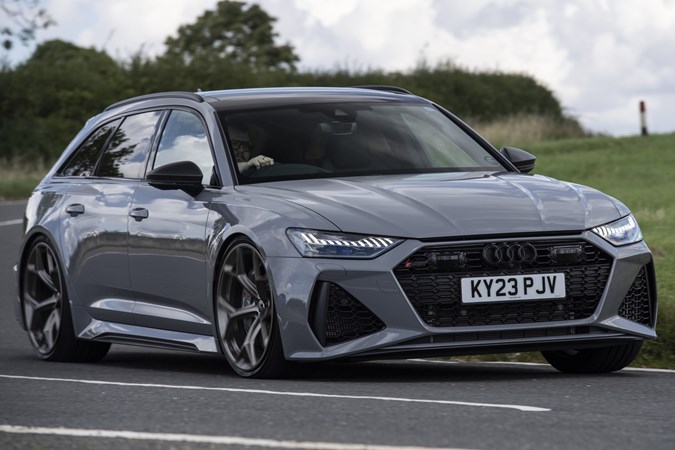
All that power gets fed to all four wheels and eight-speed tiptronic automatic gearbox and Quattro all-wheel drive. While the transmission has been fettled to help deal with all the extra torque and to speed up its shifting (a bit of a bugbear in the old car) it’s still not dual-clutch fast like the gear changes you get in an RS 3, for example.
What’s it like to drive?
- Huge grip from Quattro all-wheel drive
- Massive cornering stability with steel suspension
- Rear wheel steering trims your line for you
Put simply this RS6 is a revelation compared to the old car, which felt numb and didn’t communicate its limits particularly well, making it hard to drive to them and exploit the maximum potential of what was a very grippy chassis. Also hindering that ability was the fact it was a heavy and large car, and the necessary space to enjoy its breadth of talent was not easy to come by in the UK.
Some of those things obviously haven’t changed (this one’s even wider) but it’s now much more fun at lower speeds and easy to nudge up against its limits without finding yourself in world of howling tyres. Partly that’s down to a steering set up that paints a much clearer picture of what it’s up to (although it’s still too light in heft) and some clever tech at work too.
Rear-wheel steering borrowed from the standard A6 helps tuck the car into a bend by making both axles work together, rather than the rear of the car simply being dragged along behind. At low speed the wheels move opposite to the fronts, making it feel like the back end of the car is swinging out and reducing the turning circle, while at higher speeds they move in the same direction, aiding stability.
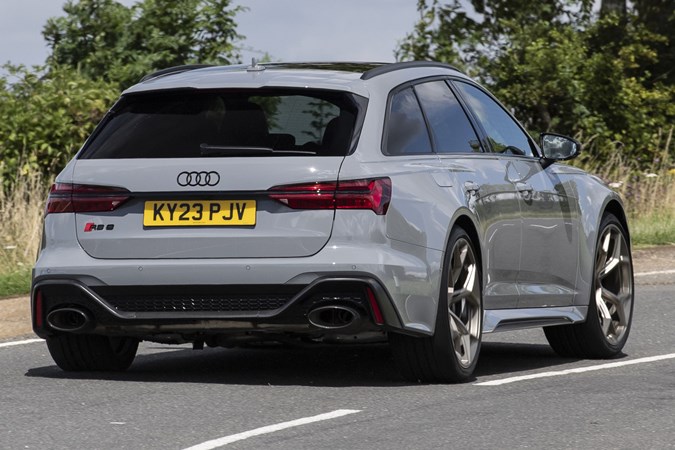
Whichever way you slice it though the RS 6 has been given a new lease of life thanks to a big injection of driving enjoyment – no longer the blunt (but arguably very effective) instrument in the market, it’s now great fun to hustle along a twisty road as well.
Standard cars and the Carbon Black editions ride on air suspension, which gives a degree of float while cruising that’s almost at odds with the car’s character. It firms up very well when it needs to, though. But top-spec cars ride on steel springs with Audi’s clever hydraulically interlinked dampers. They’re firmer, but more communicative and in our view, well worth the money.


